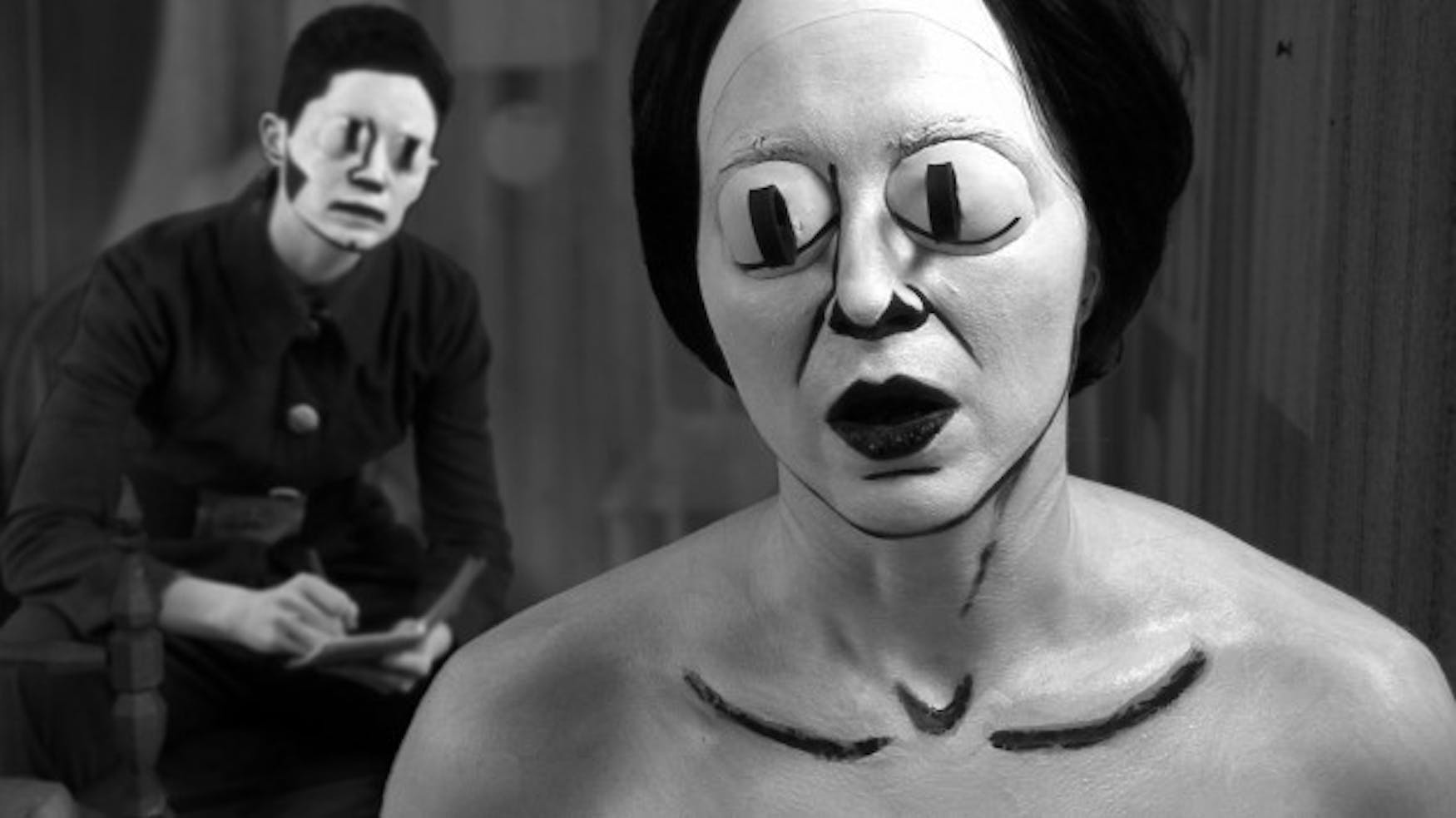Rose Video 03' opens with artist lecture
On Tuesday, the Rose Art Museum saw the openings of four video installation pieces, introduced together under the name Rose Video 03: Maria Lassnig and Mary Reid Kelley. The installations are staged in and directly outside of the Lee Gallery, replacing Josephine Meckseper's "Mall of America," which closed on March 16.
Lassnig's "Chairs" (1971) and "Art Education" (1976) are displayed right outside the gallery, shown on two small, adjacent screens. The viewing stations are also equipped with wireless headphones for their respective soundtracks.
"Chairs" portrays four minutes of playfully animated chairs. The chairs sway, bend and morph into different forms. Prof. Lori Cole (FA), the curator of the exhibit, said in the pamphlet accompanying Rose Video 03 that in the video, "the chair is not just a receptacle, but a stand-in body itself, freely moving, eroticized and playful." At times, the chairs look humanlike-one chair's legs turn into the elongated, graceful legs of a dancer.
The chairs, all various shapes, sizes and colors, seem to have different personalities as they each move to their own beat. At one point, the cushion of one of the chairs lifts up and becomes something like an animate occupant of the chair, a huge of the occupant popping out from over the backrest.
At the end of the film, the jubilant images are interrupted by live-action footage of a menacing human figure wearing a gas mask. Cole comments in the pamphlet that through this sudden change in aesthetics, "The violence of the mask, an appendage as alien as those in Lassnig's wiggling animations, is mimicked in the quick cut that concludes the film."
The 16-minute video "Art Education" presents a humorous contrast to the slightly frightening ending of "Chairs." The video depicts iconic works of art, animated so that the figures depicted were able to move and speak. Lassnig's video was incredibly humorous as she imagined what the figures like Leonardo da Vinci's "Mona Lisa" and Michelangelo's "The Creation of Adam" would say if able to speak.
Inside the Lee Gallery are Reid Kelley's video installations "Queen's English" (2008) and "You Make Me Iliad" (2010). The two videos are presented on adjacent walls and screenings alternate between the two.
"Queen's English" is narrated by a military nurse during the World War I, speaking completely in prose poetry, relaying her experiences. The film looks completely hand-drawn with extremely prominent shading techniques that make the images, especially the nurse, disconcerting.
Reid Kelley's signature use of unmoving and bulging eyes on her characters creates an even more creepy feeling as the characters stare straight into the audience. Kelley creates these eyes by attaching spherical goggles to her actor's eyes, allowing for a pop-out effect.
Kelley's "You Make Me Iliad" portrays a military brothel during the war. Reid Kelley's characters faces are painted white and decorated with black geometric shapes. And yet again, the characters had the same creepy, bulging eyes. Although the figures looked like cartoons, their voices were very realistic and clear. As Reid Kelley would note in her lecture on Tuesday evening at the Rose, it was through these cartoonish faces that she attempted to "[remove] the individual and [replace] it with stereotype or clich?(c)."
On the evening of the opening of Rose Video 03, artist Mary Reid Kelley and her husband, Patrick Kelley, gave the audience an inside look into the inspiration to her videos as well as a glance into the process of creating them.
While Reid Kelley is credited with the videos-she creates the ideas for the images that go on the screen-her husband deals with the technical aspects of filming and editing computerized images of the film.
Reid Kelley began by talking about their trip to France and Belgium, a trip which sparked her interest in World War I, her inspiration for the videos. Embarking on her journey, she did not know the outcome of the project she would eventually produce. "It was an open-ended experiment," she explained.
The Kelleys visited memorials commemorating the lost soldiers and their graveyards, making rubbing prints of the text displayed. Reid Kelley used the words she rubbed in her videos-integrating the language into the poems spoken by her characters.
During her research in Europe, Kelley often came across records discussing military brothels, inspiring the brothel scene in "You Make Me Iliad." However, Reid Kelley noted that she could find absolutely no first person records of the sex workers themselves. The information that she was able to acquire came from male soldiers, medical officers and the accounts of the women, years later, reflecting on their time in brothels. Reid Kelley noted that although her project shed light on the subject of brothels during the war, the story is not complete.
In the final portion of the lecture, Reid Kelley discussed the production process. All the filming was conducted in the couple's living room against a green screen in order to allow more creativity with the sets. Kelley demonstrated his digitally constructed three-dimensional graphics that were substituted as backgrounds. He explained that the digital sets allowed them to create an ambiance that mimics German expressionist film.
Reid Kelley's approach to the lecture-explaining her inspiration, journey and process-gave context to her videos and created a basis for understanding them.
The new installations at the Rose represent some of the newest in the modern art scene and University is extremely lucky to be able to acquire these innovative pieces in their infancy. The additional privilege of having these new up-in-coming artists come speak to the community is an additional benefit not to be overlooked, as the lectures can add substantially to our understanding of these complex and innovative pieces.
*




Please note All comments are eligible for publication in The Justice.